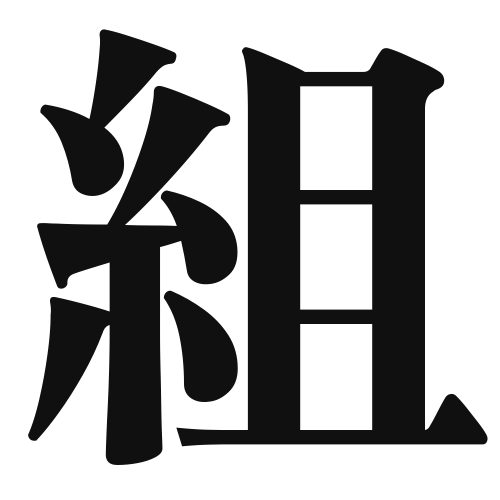1. Overview of Meaning
The kanji “組” (pronounced “kumi” or “so”) primarily means “to assemble,” “to form,” or “to group.” It conveys the idea of bringing things together or organizing them into a unit.
2. Formation and Radicals
Formation of the Kanji: The kanji “組” is a compound character (会意文字) that combines two elements: the radical “糸” (meaning “thread”) and “古” (meaning “old”). This combination suggests the idea of weaving threads together to form a cohesive unit.
Radical: The radical of “組” is “糸,” which is commonly associated with textiles and threads, reinforcing the concept of connection and assembly.
3. Examples of Usage
Common Words and Phrases: Some frequently used words that include “組” are:
- 組織 (soshiki) – organization
- 組合 (kumiai) – association or union
- 組み合わせ (kumiawase) – combination
Example Sentences in Daily Conversation:
- 私たちは新しいプロジェクトのためにチームを組みました。
(Watashitachi wa atarashii purojekuto no tame ni chīmu o kumimashita.)
(We formed a team for the new project.) - このパズルは、正しい組み合わせが必要です。
(Kono pazuru wa, tadashii kumiawase ga hitsuyō desu.)
(This puzzle requires the correct combination.)
4. Synonyms and Antonyms
Similar Kanji: A similar kanji is “連” (ren), which means “to connect” or “to link.” While both kanji involve the idea of bringing things together, “組” emphasizes forming a group or unit, whereas “連” focuses more on the act of connecting.
Antonyms: An antonym of “組” could be “分” (bun), which means “to divide” or “to separate.” This contrasts with the idea of assembling or grouping.
5. Cultural and Historical Background
Relation to Japanese Culture: The concept of “組” is significant in Japanese culture, particularly in the context of teamwork and collaboration. It reflects the value placed on community and working together towards common goals.
Proverbs and Idioms: One relevant proverb is “三人寄れば文殊の知恵” (sannin yoreba monju no chie), which translates to “When three people gather, they have the wisdom of Monju.” This emphasizes the idea that collaboration leads to greater wisdom and success, aligning with the meaning of “組.”
